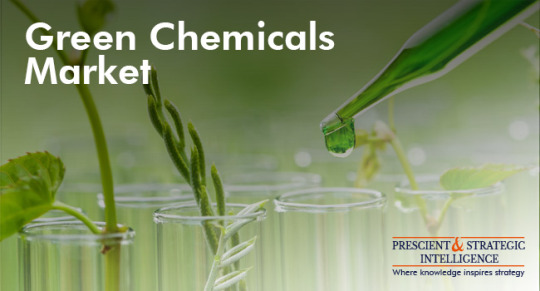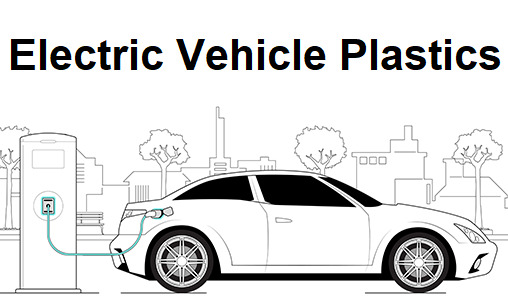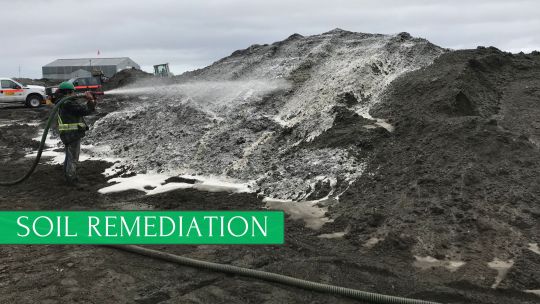#eco-friendly innovations
Explore tagged Tumblr posts
Text
The Ultimate Guide to Eco-Tech: Sustainable Solutions for Everyday Life
Introduction
In our rapidly changing world, adopting eco-tech products and solutions becomes reasonably necessary to lead a sustainable life. Eco-tech products and practices are innovations that ensure lesser impact on the environment and bring sustainability to your doorstep. At TechtoIO, we strive to help you cut through the best possible eco-tech options that will make a difference in your everyday life. Let us look at how you could get those sustainable solutions into your life. Read to continue link
#Eco-Tech#Tagscomposting systems#eco-friendly innovations#eco-friendly personal care#eco-friendly products#eco-tech solutions#electric bikes and scooters#electric vehicles#energy-efficient appliances#energy-efficient home#green cleaning solutions#home solar panels#low-flow fixtures#renewable energy#smart home devices#smart irrigation systems#smart recycling bins#sustainable building materials#sustainable living#sustainable transportation#water conservation technologies#Technology#Science#business tech#Adobe cloud#Trends#Nvidia Drive#Analysis#Tech news#Science updates
1 note
·
View note
Video
youtube
The State of Nature Tech - Lucy Almond Keynote at #Bloom23
#youtube#State of Nature Tech#Technology Trends#Environmental Innovation#Sustainable Solutions#Future of Tech#Nature-inspired Design#Eco-friendly Innovations#Sustainability Conference#Tech for a Better Planet#Innovation in Nature#Future Tech Landscape#Eco-conscious Technology
1 note
·
View note
Text
Sustainable Saskatoon: Pioneering Tomorrow's Green Solutions: Meetings

View On WordPress
#Biodiversity Conservation#CARBON FOOTPRINT#circular economy#Clean Energy#Climate Action#Climate Resilience#Climate Resilient Cities#climate solutions#Community Engagement#conservation awareness#Conservation Efforts#Conservation Strategies#Eco-City#eco-conscious#eco-conscious living#Eco-friendly Innovations#Eco-Friendly Lifestyle#Eco-friendly Practices#ecological balance#environmental impact#environmental innovation#Environmental Planning#environmental policy#environmental responsibility#environmental stewardship#Friends of the Saskatoon Afforestation Areas#George Genereux Urban REgional Park#Green Building#Green Business#Green Economy
0 notes
Text
Increasing Need for Eco-Friendly Materials Boosts Natural Fiber Composite Market
The natural fiber composites market is estimated to reach USD 392.1 million in 2023, which will progress at a 5.0% compound annual growth rate, to reach USD 46.3 million, by 2030. The progression of this industry is because of the increase in the need for eco-friendly and sustainable materials across different sectors, coupled with the several benefits of natural fiber composites. Moreover,…
View On WordPress
#Eco-friendly Innovations#industrial applications#Market Players#market trends#Natural Fiber Composites#sustainable materials
0 notes
Text
Green Chemicals: Navigating the Sustainable Frontier
The global green chemicals market is projected to be worth USD 22,039 Million by 2030, growing at a CAGR of 8.9%. The major reason behind the growth of this industry is, growing acceptance of biobased packaging and increasing concerns for fossil fuel exhaustion.
The bioalcohols category held the largest market share in terms of both volume and value in recent years. This can be ascribed form the heavy usage of bioethanol fuel for ignition engines of vehicles. Furthermore, bioethanol is also used in the production of alcohol, such as vodka, beer, brandy, gin, and whiskey.

The personal care category is projected to grow with the highest pace in near future. Mainly due to the major focus on concerns regarding the damaging effects of synthetic chemicals on the human skin. As people are leaning more toward the adoption of bio-based personal hygiene items, it is expected that the demand for green chemicals will increase from the personal care products sector, mainly from countries like India, China, America, Germany and United Kingdom.
People are becoming more concerned about environmental problems, the acceptance of bio-based packaging materials will grow in the future years, which will increase the demand for green chemicals for their production.
Green chemicals are made from animal waste and plants, that is why they are nontoxic environment friendly in nature, which contributing toward the growth of the green chemical industry.
Furthermore, they do not do any damage to the nature like, they do not release any injurious gas like sulphur dioxide. The availability of these materials is in abundance in nature. With the rising depletion of gas and oil reserves, the adoption of these chemicals is likely to grow in the near future.
The major factor which will drive the global green chemicals market are, adoption of eco friendly materials, rising concern about environment, depletion of fossil fuels and increasing population these are some major factors which will drive this industry in near future.
#Green Chemicals Market#Sustainable chemistry#Market analysis#Eco-friendly innovations#Chemical industry trends#Environmental sustainability#Green chemical applications#Sustainable materials#Market dynamics#Green chemistry solutions#Renewable resources#Sustainable manufacturing#Eco-friendly products
0 notes
Text

The Maldives Floating City, set to open in 2027, will provide eco-friendly, floating residences for 20,000 people, adapting to rising sea levels.
#Maldives#floating city#climate change#sea level rise#eco-friendly architecture#sustainable living#urban planning#2027#innovative design
91 notes
·
View notes
Text
Sustainable Fashion: A New Era for Style and Responsibility
Introduction
The fashion industry is one of the largest contributors to environmental degradation, accounting for significant water usage, greenhouse gas emissions, and waste generation. In response to these challenges, sustainable fashion has emerged as a solution to balance style with environmental and social responsibility. This movement seeks to reform how clothing is designed, produced, consumed, and discarded, making it a key player in the fight against climate change and resource depletion.
The Problem with Fast Fashion
Fast fashion, characterized by mass production of inexpensive and trendy clothing, has dominated the industry for decades. While it has made fashion accessible to millions, its environmental and social costs are staggering.
Resource Depletion: Producing textiles, particularly cotton and synthetic fibers, demands vast amounts of water and energy. For instance, making one cotton T-shirt can require up to 2,700 liters of water.
Carbon Emissions: The fashion industry accounts for approximately 10% of global carbon emissions, with synthetic fibers derived from fossil fuels being major contributors.
Waste Generation: Over 92 million tons of textile waste are generated annually, much of which ends up in landfills or incinerators.
Exploitation of Labor: Fast fashion often relies on low-cost labor in developing countries, where workers may face unsafe conditions and unfair wages.
What is Sustainable Fashion?
Sustainable fashion aims to mitigate these issues by adopting practices that respect the environment, uphold ethical labor standards, and encourage mindful consumption. It incorporates several principles:
Eco-Friendly Materials: Using organic, biodegradable, or recycled materials such as organic cotton, hemp, bamboo, and recycled polyester reduces reliance on virgin resources.
Ethical Production: Ensuring fair wages, safe working conditions, and labor rights for workers throughout the supply chain.
Waste Reduction: Prioritizing durability, repairability, and recyclability of garments to minimize waste.
Transparency: Providing consumers with information about sourcing, production processes, and environmental impact fosters accountability.
Innovations Driving Sustainable Fashion
The sustainable fashion movement is fueled by innovation and creativity, showcasing how technology and tradition can coexist to reduce environmental harm.
Textile Recycling Technologies: Advanced recycling methods can break down used textiles into their raw fibers, enabling the production of new fabrics without relying on virgin materials.
Alternative Fabrics: Lab-grown materials, such as mushroom leather (mycelium) and algae-based textiles, offer sustainable alternatives to traditional animal and synthetic products.
Digital Fashion: Virtual clothing, designed for social media or gaming, eliminates physical production, addressing issues of waste and resource use.
The Role of Brands
Brands play a crucial role in steering the fashion industry toward sustainability. Many companies are adopting innovative practices to reduce their environmental footprint:
Patagonia: Known for its environmental activism, Patagonia uses recycled materials and offers a repair program to extend the life of its products.
Stella McCartney: The brand prioritizes cruelty-free and eco-friendly materials, avoiding leather, fur, and PVC.
H&M Conscious Collection: A line featuring garments made from organic or recycled materials, showcasing the brand’s commitment to sustainable fashion.
However, the rise of “greenwashing” poses a challenge. Some companies market themselves as eco-friendly without making significant changes to their practices, making it essential for consumers to critically assess claims.
Consumer Role in Sustainable Fashion
Consumers hold significant power in driving the shift toward sustainability through their choices and behaviors:
Mindful Consumption: Opting for quality over quantity and avoiding impulse purchases can reduce demand for fast fashion.
Caring for Clothes: Properly washing, repairing, and storing garments extends their lifespan, reducing the need for new purchases.
Second-Hand Shopping: Buying pre-owned clothing from thrift stores or online platforms reduces waste and promotes circular fashion.
Supporting Ethical Brands: Choosing brands that prioritize sustainability and transparency encourages the industry to adopt better practices.
Challenges to Sustainable Fashion
Despite its promise, sustainable fashion faces several challenges:
Cost: Sustainable garments often come with a higher price tag due to ethical practices and eco-friendly materials, making them less accessible to some consumers.
Scale: Transitioning to sustainable practices on a global scale requires significant investment and collaboration across the supply chain.
Consumer Awareness: Many consumers remain unaware of the environmental impact of their clothing choices or the benefits of sustainable fashion.
The Future of Sustainable Fashion

The future of sustainable fashion lies in collaboration, innovation, and education. Governments, businesses, and consumers must work together to create a circular economy where waste is minimized, and resources are reused. Key developments include:
Legislation: Policies like the European Union’s “Green Deal” are pushing for stricter regulations on waste management and sustainable production in the fashion industry.
Education: Raising awareness about the environmental impact of fashion can empower consumers to make informed choices.
Technological Advancements: Continued innovation in materials science and recycling technologies will make sustainable fashion more accessible and cost-effective.
Conclusion
Sustainable fashion is more than a trend; it is a necessary evolution to address the pressing environmental and social challenges posed by the traditional fashion industry. By embracing eco-friendly materials, ethical practices, and mindful consumption, we can create a future where fashion reflects not just personal style but also a commitment to the planet and its people.
#“Best eco-friendly fashion brands for ethical clothing”#“Environmental impact of fast fashion and sustainable alternatives”#“How to make sustainable fashion choices”#“Tips for incorporating sustainable fashion into daily life”#Embracing Sustainable Fashion#Innovative sustainable materials in the fashion industry#What is Sustainable Fashion?
2 notes
·
View notes
Text
Electrolux Group Wins 11 iF Awards for Outstanding Product Design
Electrolux Group has won 11 coveted iF Design Awards for products designed to improve the daily lives of consumers in the home. The iF Design Awards jury recognized Electrolux Group for many aspects of design, including user interface. The iF Design Award is one of the most prominent design prizes in the world. This year, the competition received around 11,000 entries from 100 countries. The…

View On WordPress
#2023 Winners#AEG 7000 Series#AEG Appliances#AEG XTM Combo#Air Care#Air Fryer Range#AutoSense#Award-Winning Appliances#Bottom Freezer#Built-in Extractor#Care Products#Coffee Grinder#ComfortLift Dishwasher#Consumer Electronics#David Bentham#Design Awards#Design Recognition#Dish Care#Eco-Friendly#Electrolux#Electrolux 2023#Electrolux Innovation#Electrolux Sustainability#Espresso Machine#European Design#Experience Refrigerators#Fabric Care#Food Preparation#Food Preservation#Four-Stage Filter
2 notes
·
View notes
Text
Electric Vehicle Plastics Market: An In-Depth Exploration and its Contribution to a Circular Automotive Industry
The global electric vehicle plastics market size was estimated at USD 13.33 billion in 2030 and is anticipated to grow at a compound annual growth rate (CAGR) of 28.0% from 2024 to 2030. The industry is projected to witness significant growth in terms of consumption, on account of high application scope and increasing demand from the growing population. The Polypropylene (PP) resin demand in the Asia Pacific region is estimated to grow at the fastest CAGR over the forecast period. Strong government support & initiatives regarding emissions and increasing investment by manufacturers are propelling the growth of the region.

Electric Vehicle Plastics Market Report Highlights
The Asia Pacific region is estimated to grow at the fastest CAGR from 2022 to 2030. Increasing demand from the growing population coupled with environmental concerns among others are anticipated to drive market growth in the region
The battery segment is anticipated to register the fastest CAGR from 2022 to 2030. Batteries are one of the significant components of an EV and, in comparison to combustion engines, battery vehicles do not produce any emissions and are eco-friendly. The growing demand for EVs has promising growth for EV batteries
The exterior application segment accounted for the largest revenue share in 2021 and is estimated to continue its dominance over the forecast period due to the high demand in aesthetics
The BEV vehicle type segment led the industry in 2021 and it is anticipated to continue growing over the forecast period as PHEVs have higher maintenance costs than BEVs
For More Details or Sample Copy please visit link @: Electric Vehicle Plastics Market Report
Furthermore, EVs are efficient and require less maintenance as compared with traditional vehicles. These factors are expected to boost the demand for EVs, which is expected to drive the demand for plastics over the forecast period. Increasing utilization of plastics in EVs is anticipated to boost industry growth positively over the forecast period. Plastics have proven to perform well under harsh conditions through their resistance to shock, moisture, oxidation, and further maintaining their chemical and mechanical properties. Plastics will be crucial material for manufacturing lightweight and energy-efficient EVs. Based on resin type, PP is expected to witness major demand during the projected years.
Polypropylene is used in many components of the vehicle including bumpers, carpet fibers, cable insulation, and others. Properties, such as good heat, chemical & fatigue resistance, and others, are anticipated to drive the demand for PP in the industry. Major manufacturers are adopting expansion strategies, such as new product development, production facility expansions, mergers & acquisitions, and joint ventures. For instance, in October 2021, DuPont launched a new extension of its existing Zytel HTN range, named as Zytel 500 series. These products are developed to provide enhanced retention properties in e-mobility oils, electrically friendly characteristics, and a high Comparative Tracking Index (CTI).
EVPlastics #ElectricVehicles #SustainableDriving #EcoFriendlyCars #ElectricVehicleTech #CleanTransportation #GreenMobility #EVInnovation #PlasticsInEVs #FutureOfTransport #SustainableMaterials #EcoAutoDesign #EVManufacturing #PolymerInnovation #ZeroEmissionVehicles #GreenTechAuto #CleantechPlastics #EVDesign #EcoFriendlyPlastics #CircularAutoEconomy
#EV Plastics#Electric Vehicles#Sustainable Driving#Eco-Friendly Cars#Electric Vehicle Tech#Clean Transportation#Green Mobility#EV Innovation#Plastics In EVs#Future Of Transport#Sustainable Materials#Eco Auto Design#EV Manufacturing#Polymer Innovation#Zero Emission Vehicles#Green Tech Auto#Cleantech Plastics#EV Design#Eco-Friendly Plastics#Circular Auto Economy
2 notes
·
View notes
Text
Types of Fillers in Construction
Introduction Fillers play a pivotal role in construction, providing stability, strength, and insulation. Their selection is critical, affecting the cost, durability, and environmental impact of a project. This article delves into the various types of fillers utilized in the construction industry. 1. Natural Fillers Natural fillers like sand, gravel, and stone are ubiquitous in construction due to…

View On WordPress
#aerogel insulation in construction#carbon fiber for structural reinforcement#composite fillers in construction#construction aggregate materials#construction filler selection guide#construction fillers#construction industry standards for fillers#construction material innovation#cost-effective fillers for construction#durable fillers for construction#eco-friendly construction fillers#EPS beads in construction#fiber-reinforced concrete#fiberglass in concrete#fly ash concrete filler#graphene in building materials#insulation panels in construction#lightweight construction fillers#mineral fillers in concrete#natural fillers in construction#organic fillers for construction#silica fume in construction#specialty construction fillers#sustainable building materials#synthetic fillers for building#thermal insulation fillers#types of construction fillers
2 notes
·
View notes
Text

Unearthing the Power of Soil Remediation: A Promising Path towards Environmental Sustainability
The health of our planet is intricately linked to the quality of its soil, an aspect that is often overlooked. Soil pollution presents a significant environmental concern, affecting agricultural productivity, water quality, and ultimately, human health. However, the innovative field of soil remediation holds the key to reclaiming contaminated land and fostering a sustainable future.
Soil remediation, a sector of environmental science, focuses on purifying and revitalizing the soil. It encompasses various techniques to remove harmful pollutants, such as heavy metals, petroleum products, pesticides, and more, from contaminated soil. The ultimate aim is to restore the soil to a state where it can once again support healthy growth and biodiversity.
There are several methods of soil remediation, each tailored to the type and extent of soil contamination.
1. Excavation and Disposal
As a direct approach, this method involves physically removing the contaminated soil and disposing of it in designated landfills. Although it's an immediate solution, it merely transfers the contamination issue from one place to another, leading to concerns about its environmental sustainability.
2. Soil Washing
This technique uses water, sometimes mixed with other substances, to wash away contaminants. It's particularly effective for treating soils contaminated with heavy metals or certain kinds of organic pollutants. However, the process requires treatment of the resulting washwater to avoid secondary contamination.
3. Bioremediation
One of the most promising soil remediation strategies, bioremediation, employs natural processes to clean up contaminated soil. Specific microorganisms or plants (phytoremediation) are used to absorb, break down, or immobilize contaminants. This method is eco-friendly and holds great potential for large-scale applications.
4. Thermal Desorption
Thermal desorption involves heating soil to evaporate the pollutants, which are then collected and treated separately. This process is ideal for soils contaminated with volatile organic compounds, but it requires substantial energy input.
Soil remediation's significance extends far beyond environmental preservation. Healthy soil is critical for a functioning ecosystem, contributing to plant growth, water filtration, and climate regulation. Moreover, with the escalating global population, the need for arable land is at an all-time high. Through soil remediation, previously unusable land can be restored, strengthening food security and promoting sustainable land use.
Simultaneously, soil remediation helps protect groundwater resources. Soil acts as a natural filter, and contaminants present in the soil can leach into groundwater over time, posing serious health risks. By removing these pollutants, soil remediation safeguards our water supply.
In the grand scheme of climate change, soil remediation plays a pivotal role. Soil holds three times as much carbon as the atmosphere. Techniques like bioremediation not only remove contaminants but also improve soil health, increasing its capacity to store carbon and thereby helping to mitigate climate change.
In conclusion, soil remediation is not merely a sector of environmental science; it is a tool of hope for our planet. It embodies the mantra of "heal the soil, heal the planet," and underscores our responsibility to protect the environment. With continued research and technological advancements in soil remediation techniques, we can make strides towards a sustainable future.
Let's invest in soil remediation - for our health, for our food, and for our planet.
#Soil Remediation Techniques#Methods of Soil Remediation#Importance of Soil Remediation#Biological Soil Remediation#Chemical Soil Remediation#Thermal Soil Remediation#Soil Contamination Solutions#Future of Soil Remediation#Nanoremediation for Soil#Prevention of Soil Pollution#Soil Degradation and Remediation#Phytoremediation Techniques#Environmental Restoration Techniques#Soil Clean-up Methods#Soil Sustainability Practices#Eco-friendly Soil Remediation#Industrial Waste Soil Remediation#Soil Remediation Technologies#Innovations in Soil Remediation#Impact of Soil Remediation
2 notes
·
View notes
Text
FISKER DELIVERS FIRST 22 FISKER OCEAN SUVS, Establishing Presence in Competitive EV Market
Fisker Inc. achieves a major milestone by delivering the highly anticipated Fisker Ocean SUV to customers in the United States. Explore the groundbreaking features, sustainability, and investment potential of Fisker in the rapidly growing electric vehicle sector

Fisker Ocean SUV:
Innovation and Unmatched Features: The Fisker Ocean SUV represents a groundbreaking leap in automotive innovation. Designed to offer a sustainable and luxurious driving experience, it is equipped with cutting-edge features and impressive performance capabilities. Boasting a class-leading range of up to 360 miles, it surpasses other electric SUVs in its category. The SUV's all-wheel drive system and dual-motor setup deliver exceptional power and acceleration, providing a thrilling driving experience that surpasses traditional internal combustion
Read More
Other Topics Read:
10 Small Investment Ideas: Building Wealth
Stocks on Wall Street Show Resilience
South Korea Retains Position in MSCI Emerging Markets Index
Mastering the 5 EMA: A Powerful Indicator for Analyzing Price Trends
#Fisker #ElectricVehicles #Sustainability #Innovation #CustomerSatisfaction #InvestmentOpportunity #FuturePlans #Expansion #EVMarket
#: Fisker#electric vehicle manufacturer#Fisker Ocean SUV#innovation#sustainability#customer satisfaction#investment opportunity#strategic partnerships#global expansion#leadership team#market conditions#stock performance#Fisker Inc. achieves significant milestone by delivering the highly anticipated Fisker Ocean SUV to customers in the United States#Fisker Ocean SUV: A groundbreaking leap in automotive innovation and sustainability#Fisker Ocean SUV surpasses competitors with its class-leading range of up to 360 miles#Positive customer feedback solidifies Fisker's reputation as a forward-thinking electric vehicle manufacturer#Fisker's commitment to sustainability and eco-friendly materials reduces carbon footprint#Investment opportunity in Fisker as demand for electric SUVs continues to rise#Strategic partnerships strengthen Fisker's position in the competitive electric vehicle market#Fisker's expansion plans include ramping up production capacity and targeting international markets#Fisker's success in delivering the first 22 Fisker Ocean SUVs showcases innovation#and customer satisfaction#Fisker presents an exciting investment opportunity in the rapidly growing electric vehicle sector
2 notes
·
View notes
Text
The Impact of E-Commerce on Packaging Design and Materials

Introduction (H1): The Transformative Effect of E-Commerce on Packaging Design and Materials
The rise of e-commerce has revolutionized the way we shop, transforming the retail landscape and disrupting traditional brick-and-mortar stores. As more consumers turn to online shopping, the packaging industry has had to adapt to meet the demands of this rapidly growing market. In this article, we will explore the profound impact of e-commerce on packaging design and materials, and how companies like Shitla Paper are providing innovative solutions to cater to these evolving needs.
The Growth of E-Commerce : Changing Consumer Behavior and Packaging Requirements
With the convenience and accessibility of online shopping, e-commerce has experienced exponential growth over the past decade. Consumers now expect their purchases to be delivered safely and efficiently to their doorstep, which has significant implications for packaging design and materials.
In the e-commerce landscape, packaging serves multiple purposes beyond protection and containment. It must also create a positive unboxing experience, reflect the brand's identity, and be environmentally sustainable. This shift in consumer expectations has given rise to the need for innovative packaging solutions that strike a balance between functionality, aesthetics, and sustainability.
The Role of Packaging Design in E-Commerce : Creating a Memorable Unboxing Experience
In the digital age, packaging design plays a crucial role in brand differentiation and customer engagement. E-commerce companies understand that the unboxing experience is an opportunity to create a lasting impression on the consumer. Well-designed packaging can evoke excitement, anticipation, and even emotional connections with the brand.
In response to this trend, packaging design has become more creative and visually appealing. Unique box structures, personalized inserts, and branded materials enhance the unboxing experience and encourage customers to share their positive experiences on social media, generating valuable word-of-mouth marketing.
The Importance of Packaging Materials in E-Commerce : Balancing Protection and Sustainability
E-commerce packaging must ensure the safe transit of products from warehouses to consumers' homes. Traditional packaging materials like cardboard and bubble wrap continue to be widely used, but there is growing awareness of the need for sustainable alternatives.
Eco-friendly materials, such as recycled and biodegradable packaging, are gaining popularity. Companies like Shitla Paper are at the forefront of providing sustainable packaging solutions. By offering paper-based packaging materials that are both protective and environmentally friendly, Shitla Paper helps e-commerce businesses align with their customers' eco-conscious values.
Innovation in E-Commerce Packaging : Shitla Paper's Role in Driving Sustainable Solutions
Shitla Paper, a leading provider of paper for packaging solutions, recognizes the evolving needs of the e-commerce industry. With a commitment to sustainability, they offer a range of eco-friendly packaging materials that meet the demands of e-commerce businesses while reducing their environmental footprint.
Their innovative paper-based packaging solutions include corrugated boxes, mailers, and cushioning materials. By leveraging their expertise in paper manufacturing and staying ahead of industry trends, Shitla Paper enables e-commerce companies to enhance their brand image and deliver a memorable unboxing experience while reducing their reliance on non-recyclable materials.
Conclusion : Embracing Sustainable Packaging in the E-Commerce Era
As e-commerce continues to shape consumer behavior and transform the retail landscape, packaging design and materials play a crucial role in meeting the changing needs of businesses and consumers alike. Balancing functionality, aesthetics, and sustainability is essential for e-commerce companies seeking to stand out in a crowded market.
Shitla Paper's dedication to providing eco-friendly packaging solutions positions them as a valuable partner for e-commerce businesses looking to enhance their brand image and reduce their environmental impact. By embracing sustainable packaging practices, businesses can not only meet customer expectations but also contribute to a greener, more responsible future.
To learn more about Shitla Paper's innovative packaging solutions, visit their website at https://www.shitlapapers.com/.
#E-commerce packaging#Packaging design for online shopping#Sustainable packaging solutions#E-commerce packaging materials#Shitla Paper packaging solutions#Unboxing experience in e-commerce#Innovative packaging design#Eco-friendly packaging materials#Impact of e-commerce on packaging#Branding through packaging design#Sustainable packaging trends#Shitla Paper: Leading packaging provider#Environmental responsibility in e-commerce#Enhancing customer experience through packaging#Balancing protection and sustainability in packaging
3 notes
·
View notes
Text
Exploring the Future of Commuting with Velotric
The E-Bike industry is rapidly evolving, and Velotric is at the forefront of this exciting transformation. Known for their innovative designs and commitment to quality, Velotric has become a favorite among urban commuters seeking a reliable and stylish mode of transport.
One standout model is the Velo Electric Commuter Bike, which combines sleek aesthetics with cutting-edge technology. This bike is perfect for those navigating city streets, offering a smooth ride and impressive battery life. With features like adjustable pedal assist and a lightweight frame, the Velo Electric Commuter Bike makes commuting not just easier, but also more enjoyable.
Whether you're heading to work or exploring the city, Velotric ensures that every ride is a positive experience. The company's dedication to sustainability and eco-friendly transportation options is commendable, making it a great choice for environmentally conscious riders.
Join the movement towards better commuting solutions and discover the joy of riding with Velotric's Velo Electric Commuter Bike!
#transportation innovation#lightweight frame#battery life#E-Bike#eco-friendly#Velo Electric Commuter Bike#urban transport#urban commuters
0 notes
Text

The Maldives Floating City, set to open in 2027, will provide eco-friendly, floating residences for 20,000 people, adapting to rising sea levels.
#Maldives#floating city#climate change#sea level rise#eco-friendly architecture#sustainable living#urban planning#2027#innovative design
67 notes
·
View notes
Text
How the Deep Litter System Transformed Pig Farming in Kajiado
The world of agriculture is continuously evolving, with farmers embracing innovative solutions to enhance productivity, improve animal welfare, and ensure environmental sustainability. In 2023, I had the privilege of collaborating with a dedicated farmer in Kajiado, Kenya, who was running a medium-sized pig farm with 30 sows. Our journey towards transforming his operations ended with the…
#agribusiness success stories#compost from pig litter#cost-effective pig farming#deep litter system#deep litter system benefits#eco-friendly pig farming#environmental stewardship in pig farming#innovative pig farming practices#low maintenance pig farming#nutrient-rich compost#pig farm productivity#pig farm sustainability#pig farming in Kajiado#pig farming innovations#pig health improvement#pig welfare improvement#reducing pig mortality#sustainable agriculture practices#sustainable pig farming#waste management in pig farming
0 notes